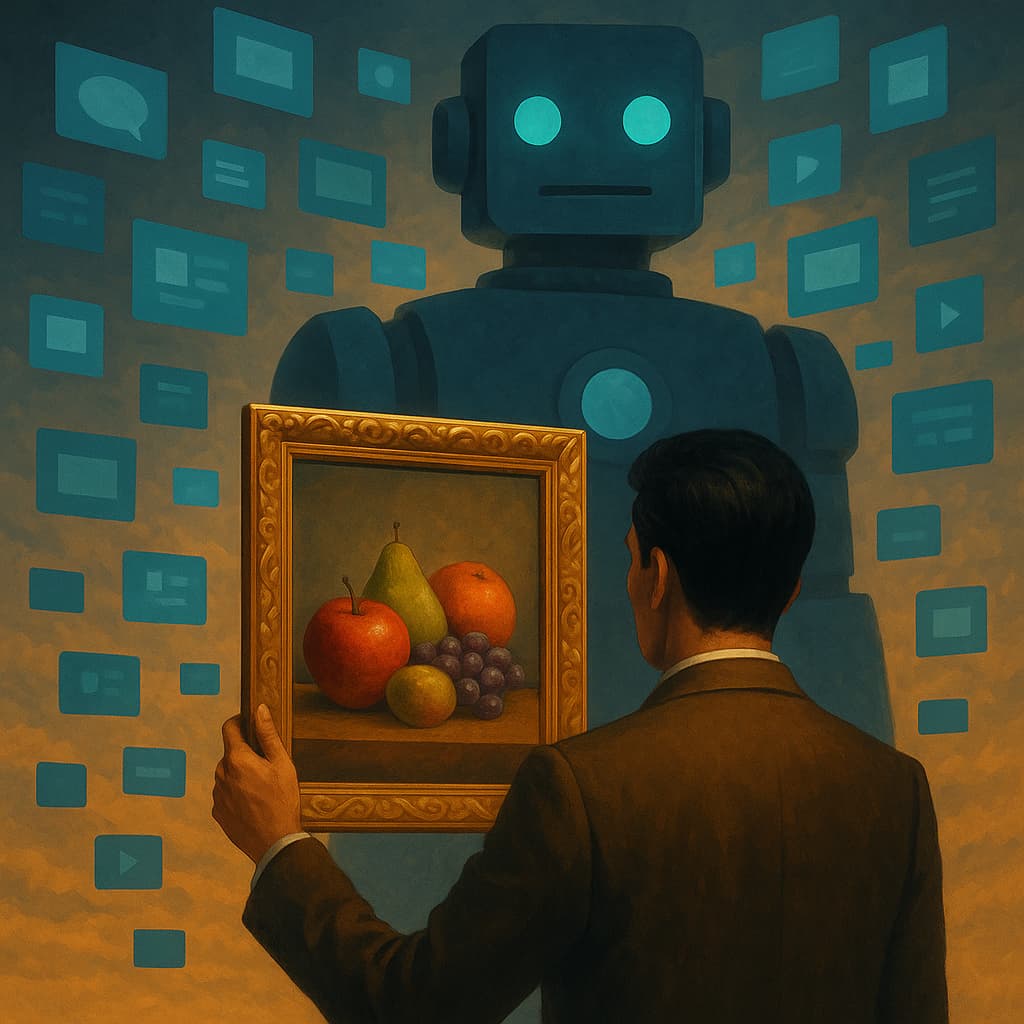The Dawn of AI Abundance
Generative models like GPT‑4o, Claude 3, Midjourney 6 and every task‑specific agent built on top of them have collapsed the cost of creation. Code that once took a sprint ships in hours. Blog‑posts, ads and playlists flow from a single prompt. We have crossed from scarcity of output to super‑abundance of output.
When the marginal cost of making something trends toward zero, the marginal cost of publishing trends the same. The inevitable result is déjà‑vu content—indistinguishable articles, cloned product UIs, cookie‑cutter code. Pat Grady called it the tremendous sucking sound of the market: an internet filled with AI slop.
⚠️ Signal‑to‑noise plummets. Discovery fatigue rises. Trust erodes.

Taste as Scarcity
If creation is easy, selection is hard. Taste—your practiced ability to choose, refine and elevate—becomes the scarce asset. It is:
- Discerning Vision – Knowing why something should exist, for whom, and when «strategy».
- Masterful AI Orchestration – Using the model as instrument, not autopilot. Prompt, constrain, override.
- Curatorial Judgment – Separating signal from noise; shipping only what shines.
- Authentic Originality – Imprinting voice, values, brand; resisting the median of the training data.
- Deep Empathy – Optimising for human delight over engagement metrics.
Case Notes
- Notion AI focuses on contextual work—meeting summaries & actionable next steps—rather than generic copy‑paste text generation.
- Stripe Docs remain the gold‑standard because every section is ruthlessly edited; nothing superfluous survives review.
- Traversal trains an agent to out‑perform elite DevOps engineers—not by brute force, but by narrowing scope and tuning for the exact workflow.
Sharpening Your Taste Advantage
| Practice | Why it Works |
|---|---|
| Study the Masters | Reverse‑engineer why great products feel great. Pattern‑match quality. |
| Cross‑pollinate | Bring design into dev, philosophy into product. Taste thrives on adjacent possibles. |
| Ruthless Curation | Keep a “hell‑yes” bar. Delete the rest. |
| Continuously User‑Test | Taste without empathy drifts into vanity. Ship, watch, listen, iterate. |
| Codify Principles | Write down the non‑negotiables. They become the guard‑rails for you and your models. |
For Builders & Teams
Move from “Can we ship this?” → to “Is this worth someone’s precious attention?”
- Track retained usage over vanity MAUs.
- Price on outcome; protect margin with proprietary data loops.
- Default to vertical or function‑specific agents where intimacy beats generality.
AI has inverted the economics of making things. The scarcest resource is no longer compute or even talent—it’s tasteful judgment. In the agent economy that’s forming, the winners will be those who wield models and maintain a razor‑sharp filter for what deserves to exist.
So build with abundance, publish with taste, and your work will stand out long after the flood of AI slop has receded.
Questions, counter‑points, or examples of taste‑driven products? I’d love to hear from you!